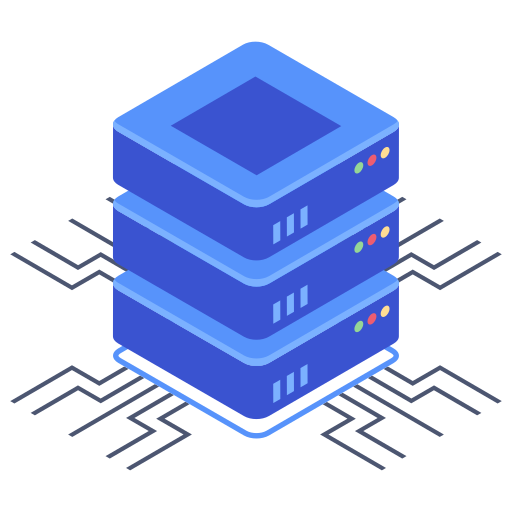Launching and scaling a Software as a Service (SaaS) platform requires careful consideration of your hosting infrastructure. Choosing the right hosting solution is crucial for ensuring performance, reliability, and scalability as your user base grows. This decision impacts not only your application’s speed and availability but also your overall operational costs and the user experience you provide. Understanding the nuances of SaaS hosting and planning for growth is key to long-term success.
Choosing the Right Hosting Model
The hosting model you select significantly influences your SaaS application’s performance and scalability. Several options exist, each with its pros and cons. Shared hosting, while cost-effective for small-scale applications, quickly becomes a bottleneck as user traffic increases. Cloud hosting, on the other hand, offers unparalleled scalability and flexibility, allowing you to easily adjust resources based on demand. Dedicated servers provide a balance between control and cost, suited for applications with predictable traffic patterns. Ultimately, the best choice depends on your specific needs and growth projections. For rapid growth and unpredictable traffic, I highly recommend cloud-based solutions.
Cloud Hosting: The SaaS Powerhouse
Cloud hosting stands out as the preferred choice for many SaaS businesses due to its inherent flexibility and scalability. Leading providers like AWS, Azure, and Google Cloud offer a range of services that cater to different needs. You can choose from various server types, databases, and other infrastructure components, allowing you to tailor your environment precisely. The ability to scale resources up or down on demand ensures optimal performance and cost efficiency. Cloud hosting also enhances resilience through redundancy and disaster recovery capabilities, ensuring your application’s continued availability even during outages.
- Automatic scaling: Adjust resources based on real-time demand.
- High availability: Redundancy minimizes downtime.
- Pay-as-you-go pricing: Only pay for the resources you consume.
- Global reach: Deploy your application across multiple regions for optimal performance and latency.
Performance Optimization and Monitoring
Ensuring the performance and stability of your SaaS application is critical for user satisfaction and business success. Regular monitoring and optimization are essential to identify and address performance bottlenecks before they impact your users. Implementing robust monitoring tools allows you to track key metrics like response times, error rates, and resource utilization. This data provides valuable insights into your application’s behavior and helps you proactively address potential issues. Proactive monitoring is crucial; my experience shows that a well-monitored system prevents major issues before they become critical.
Key Performance Indicators (KPIs) to Track
- Response time: How quickly your application responds to user requests.
- Error rate: The percentage of failed requests.
- Resource utilization: CPU, memory, and disk I/O usage.
- Uptime: The percentage of time your application is available.
Security Considerations
Security must be a paramount concern for any SaaS application. Protecting your users’ data and maintaining the integrity of your system is crucial for building trust and mitigating potential risks. Employing robust security practices, including regular security audits, penetration testing, and implementation of appropriate security protocols, is essential. Cloud providers offer various security features, but you must also take proactive steps to secure your application code and data. Choose a provider with a strong security track record and implement my own robust security policies to maximize protection.
Essential Security Measures
- Data encryption: Protect data both in transit and at rest.
- Access control: Restrict access to sensitive data based on user roles.
- Regular security updates: Keep your software and infrastructure updated with the latest security patches.
- Intrusion detection and prevention: Monitor for and prevent unauthorized access attempts.
Scaling for Growth
Planning for growth is vital for SaaS success. Your hosting solution must be able to accommodate increasing user demand and traffic without compromising performance. Cloud hosting’s scalability is a significant advantage here. As your user base grows, you can easily scale your resources to handle the increased load. This allows for seamless expansion without demanding extensive infrastructure changes. However, scaling effectively requires careful planning and monitoring to ensure smooth transitions and optimal resource utilization.
Frequently Asked Questions
Q: What is the best hosting solution for a new SaaS startup?
A: For startups, cloud hosting offers a cost-effective and highly scalable solution. You only pay for what you use, and you can easily scale as your needs grow. However, if your budget is extremely limited and your initial traffic is predictable, a virtual private server (VPS) might be a suitable starting point.
Q: How can I ensure the security of my SaaS application?
A: Implementing a layered security approach is essential including data encryption, access control mechanisms, regular security audits, and penetration testing. Keeping your software and infrastructure updated with the latest security patches is also critical. It always helps to partner with a vendor offering robust built-in security features for your hosting environment.
Q: How can I prepare for scaling my SaaS application?
A: Planning for scalability involves several key measures: Choose a hosting solution that offers easy scalability, such as cloud hosting. Implement a robust monitoring system to track performance metrics and identify potential bottlenecks. Design your application with scalability in mind, using microservices architecture wherever suitable to improve efficiency.

